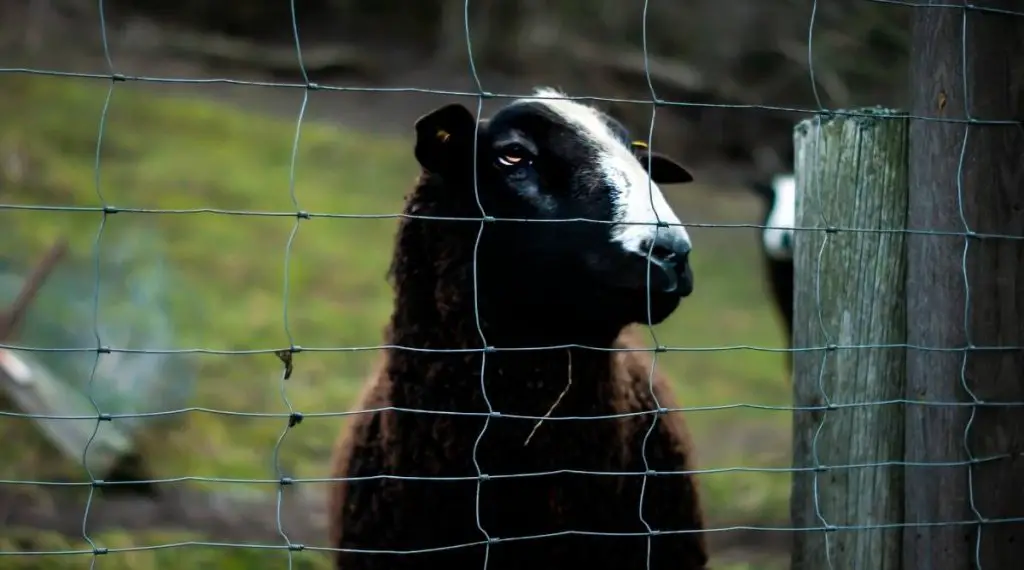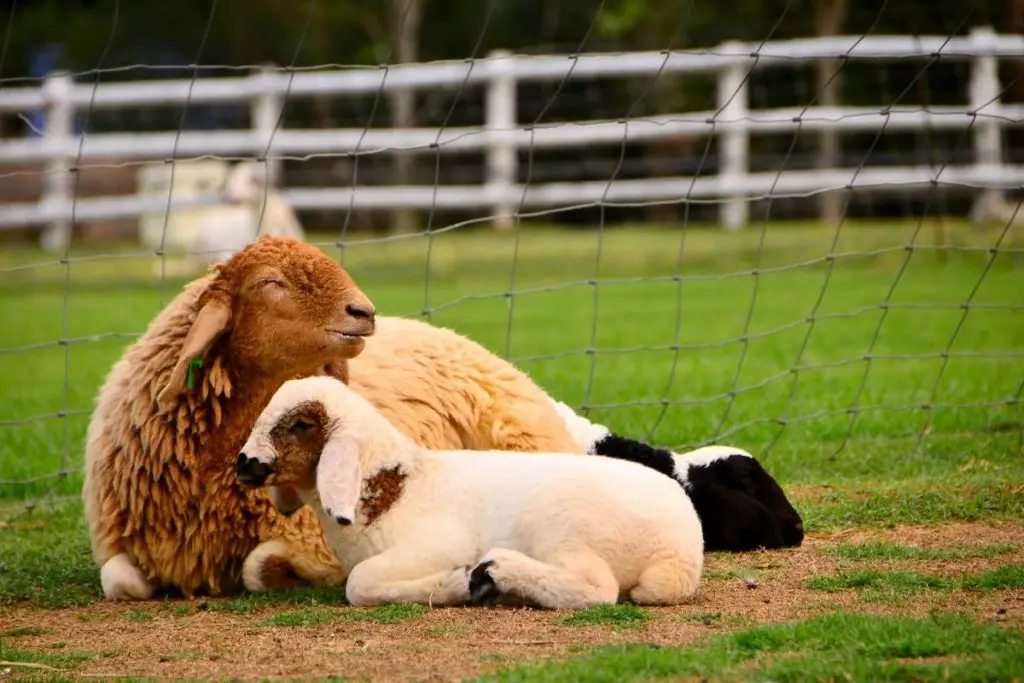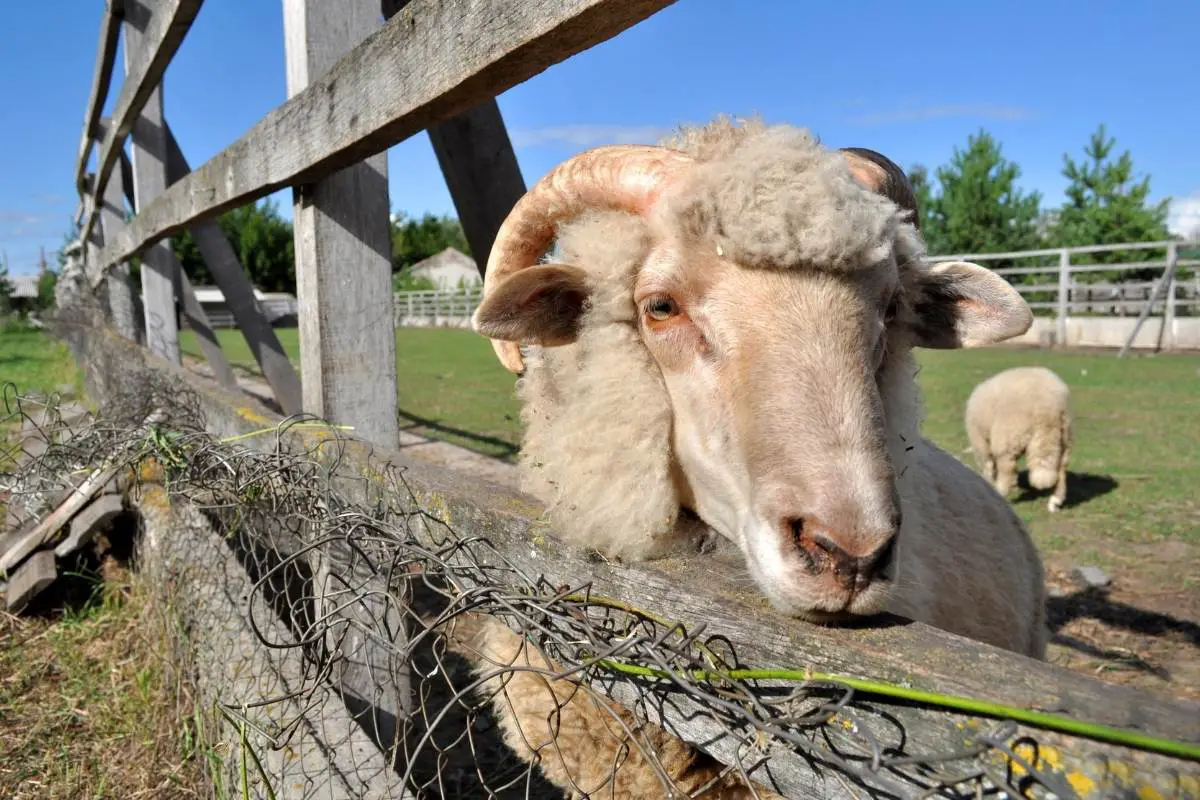When designing sheep fencing, there's a lot to keep in mind: the type of fence, the materials used, the gaps between the posts, and the height of the fence. Factors like climate, budget, and the presence of predators will also impact the type of fencing you decide to build.
Table of Contents
Types of sheep fencing

Key sheep fencing options include:
- Welded wire sheep fencing: Mainly used for perimeter fencing because it’s made of barbed wire.
- Pros: May be used in conjunction with other fences, relatively low-cost, minimal maintenance
- Cons: Time-consuming installation and repairs
- High tensile electric fencing/high tensile fence: Made of high tensile wires. Used for boundaries and for keeping predators away.
- Pros: Easy construction, durable, low maintenance costs
- Cons: May be dangerous for sheep if they come close
- Plastic mesh electric fencing: Fences made of poly-electrified mesh are used for temporary setups (rotational grazing and paddocks)
- Pros: Highly visible to both humans and sheep, relatively solid upon installation
- Cons: Can tangle up every time you need to roll it to move to another location
- Polywire rope fencing: Made of conductive polywires for better pasture management and rotational grazing
- Pros: Relatively low-cost
- Cons: Not as durable as the permanent types of fences
- Tape fencing: As the name implies, it’s made of polytape and used for temporary interior fencing.
- Pros: Easily visible because of its colors, relatively low cost
- Cons: Cannot withstand high amounts of stress and pressure
- Board fence with wire mesh: These are fences typically used for homes and land borders. They are usually made of lumber and galvanized wire.
- Pro: Versatile in terms of height
- Con: High maintenance costs
- Electric netting: Usually made of energizer polywire ribbons or strands brought together using polyethylene fibers. Generally used for the outermost fence lines of properties that are too big for the sheep to come close to.
- Pro: Relatively inexpensive, versatile, can be used for permanent or temporary fencing
- Con: Cannot withstand as much pressure as the other types of fences
- Stock panel: This is mainly used for corrals and holding areas. It’s usually made of galvanized rods or ground rods.
- Pros: Easily visible to the sheep, quite durable
- Cons: Relatively expensive, steep learning curve in terms of fence installation
Perimeter vs. interior fencing

Depending on the total area of your sheep farm, you may need both perimeter and interior fencing. At a minimum, you need perimeter fencing.
Perimeter fencing
Sheep need a form of physical blockage to prevent them from leaving the farm. This is known as the perimeter fence.
The main goal of perimeter fencing is to contain sheep and keep them safe from predators.
Interior fencing
Interior fencing is used to subdivide land into different grazing areas. This is especially important during breeding season. Interior fences help separate rams from each other, preventing aggression and injuries.
Interior fencing can also isolate sick sheep from those that have no problem feeding.
How high does a sheep fence need to be?
In addition to keeping predators out, sheep fences are also designed to keep out deer and other small animals like rabbits. The average perimeter fence height ranges from 51 to 54 inches.
Sheep aren’t excellent jumpers like goats are, so they’re unlikely to jump over your fence. Still, some fences have a top rail that prevents sheep from climbing over them.
How high should you design your sheep fencing? It depends on:
- Any rules or regulations governing your land
- The height that predators, sheep, and other animals can scale
- Your budget (higher fencing means higher costs)
Sheep fence posts
Sheep fence posts can be made of bamboo, wood, concrete, or even plastic. They are commonly installed with a spacing of 10 to 30 feet apart.
They are usually topped with barbed wire or decorative metal or plastic railings. The shorter the distance between the posts, the more durable the fence. Fences with less distance between posts can withstand more stress and pressure when sheep or predators interact with it.

